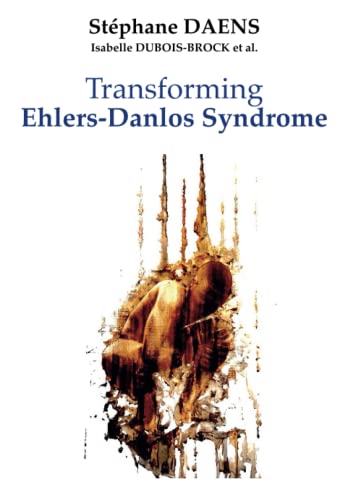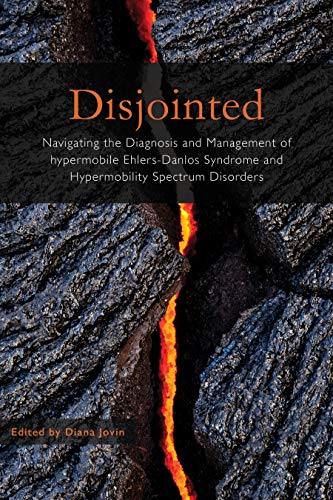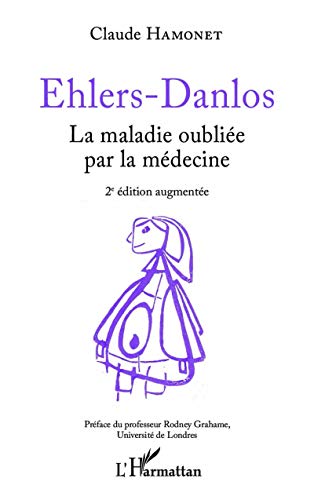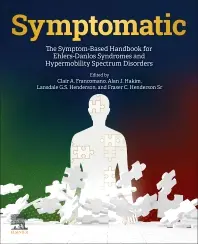
Transforming Ehlers-Danlos Syndrome: A Global Vision of the Disease - The Epigenetic Revolution - Emergencies
“Transforming Ehlers-Danlos Syndrome” : What is the disease’s history? What are its clinical signs and symptoms? Is Ehlers-Danlos Syndrome really that rare? Is it necessary to modify the disease’s current classification? How is it transmitted to children? How does it evolve over the course of a lifetime? How is it managed? What treatments are available to help patients improve their quality of life? How can confusing emergency situations for both patients and caregivers be managed?
These are only a few of the questions that this book attempts to answer precisely, with specific treatment regimens adapted to the unique situations that any family physician or specialist may encounter. Dr. Stéphane Daens collaborated with thirty specialists from around the world to get a better understanding of this disease, which remains underdiagnosed and poorly understood. Patients experience severe medical wandering and a more than two-decade delay in diagnosis because of the lack of knowledge about the disease. Although it is often confused with Fibromyalgia, Ehlers-Danlos Syndrome necessitates a completely different approach to treatment and management. It is a hereditary condition with currently unclear transmission pathways. This book introduces novel concepts involving the disease transmission and evolution over a lifetime. Aside from classical genetics, the role of epigenetics, mast cells, autonomous nervous system, proprioception, nutrition, and microbiota appears unavoidable.
Main author: Doctor Stéphane Daens. Co-authors: Doctor Isabelle Dubois-Brock, Professor Claude Hamonet, Professor Daniel Frédy, Doctor Trinh Hermanns-Lê, Mr. Olivier Hougrand, Professor Jaime F. Bravo, Professor Stephen W. Porges, Doctor Katja Kovacic, Doctor Jacek Kolacz, Mr. David Leroy, Mr. Dominique Ouhab, Professor Michel Vervoort, Professor Andràs Pàldi, Doctor Daniel Grossin, Doctor Pradeep Chopra, Doctor Norman Marcus, Doctor Jessica Pizano, Doctor Michael P. Healy, Professor David Levine, Professor Anne Maitland, Doctor Georges Verougstraete, Doctor Georges Obeid, Doctor Kambyse Samii, Doctor Richard Amoretti, Doctor Emmanuel Tran-Ngoc, Doctor Michel Horgue, Professor Antonio Bulbena-Vilarrasa, Professor Carolina Baeza-Velasco, Professor Andrea Bulbena-Cabré, and Mrs. Dominique Weil.
“This book is not only an anthology of what is currently known or said about Ehlers-Danlos; it is also a practical essay for both practitioner and patient.” Prof. Claude Hamonet, Physical Medicine and Rehabilitation, Paris, France.
“In reading this volume, I have gained an appreciation for the progress that has been made in understanding and treating EDS.” Prof. Stephen W. Porges, Neuroscience, North Carolina, USA.
“Doctors, patients, and anyone else interested in EDS will find everything they have ever wanted to know about this disease in this fascinating book.” Prof. Michel Vervoort, fundamental geneticist, Paris, France.
“Here is a new bible for EDS patients, that serves as a beacon, lighting the way for those in pain, often despair, and hiding in plain sight of the modern, biomedical community.” Prof. Anne Maitland, Internal Medicine, Allergy & Immunology, New York, USA

Disjointed Navigating the Diagnosis and Management of Hypermobile Ehlers-Danlos Syndrome and Hypermobility Spectrum Disorders
Disjointed is for patients with hEDS/HSD and the physicians who treat them. hEDS/HSD is an underrecognized, complex, multisystemic disorder, with the silos of healthcare’s specialties often working against effective and efficient treatment. With 21 specialist & 6 resource chapters, Disjointed brings together physician, patient, and parent perspectives to support the goal of earlier and more complete intervention.

Ehlers-Danlos: La maladie oubliée par la médecine (French Edition)
La maladie d’Ehlers-Danlos est une maladie héréditaire qui touche, de façon diffuse mais très variable, la quasi-totalité des tissus du corps humain, à l’exclusion du système nerveux. Ce n’est pas une maladie rare mais au contraire très fréquente (2 % de la population française). Ce n’est pas une maladie orpheline puisque des traitements efficaces ont pu être mis en place pour atténuer les conséquences fonctionnelles. Ce livre vient apporter les réponses que des centaines de milliers de patients attendent pour expliquer leurs souffrances et les multiples situations de handicap qu’ils rencontrent au quotidien, le plus souvent dans l’incompréhension parfois hostile de leur entourage et de leurs médecins.

The Symptom-Based Handbook for Ehlers-Danlos Syndromes and Hypermobility Spectrum Disorders
Symptomatic: The Symptom-Based Handbook for Ehlers-Danlos Syndromes and Hypermobility Spectrum Disorders offers a novel approach to the subject, structured around the panoply of symptoms those with Ehlers-Danlos syndromes and hypermobility spectrum disorders may describe to their clinicians. The content is arranged intuitively from head to feet. Each chapter integrates a clinical case study with a concise discussion and two important tools: a simplified algorithm for diagnosing and managing each symptom; and differential diagnoses (i.e. alternative explanations) for the symptoms. Combining the expertise of some 70 leading clinicians representing more than 30 specialties, the content is suited for clinicians who need a concise presentation of the various and complex symptoms they confront in their practice. It also aims to inform and empower patients, helping them understand the nature of these concerns and their management. This handbook advances an integrative understanding of this emerging interdisciplinary field, bridging the gaps between the several dozen specialties germane to EDS and HSD.



